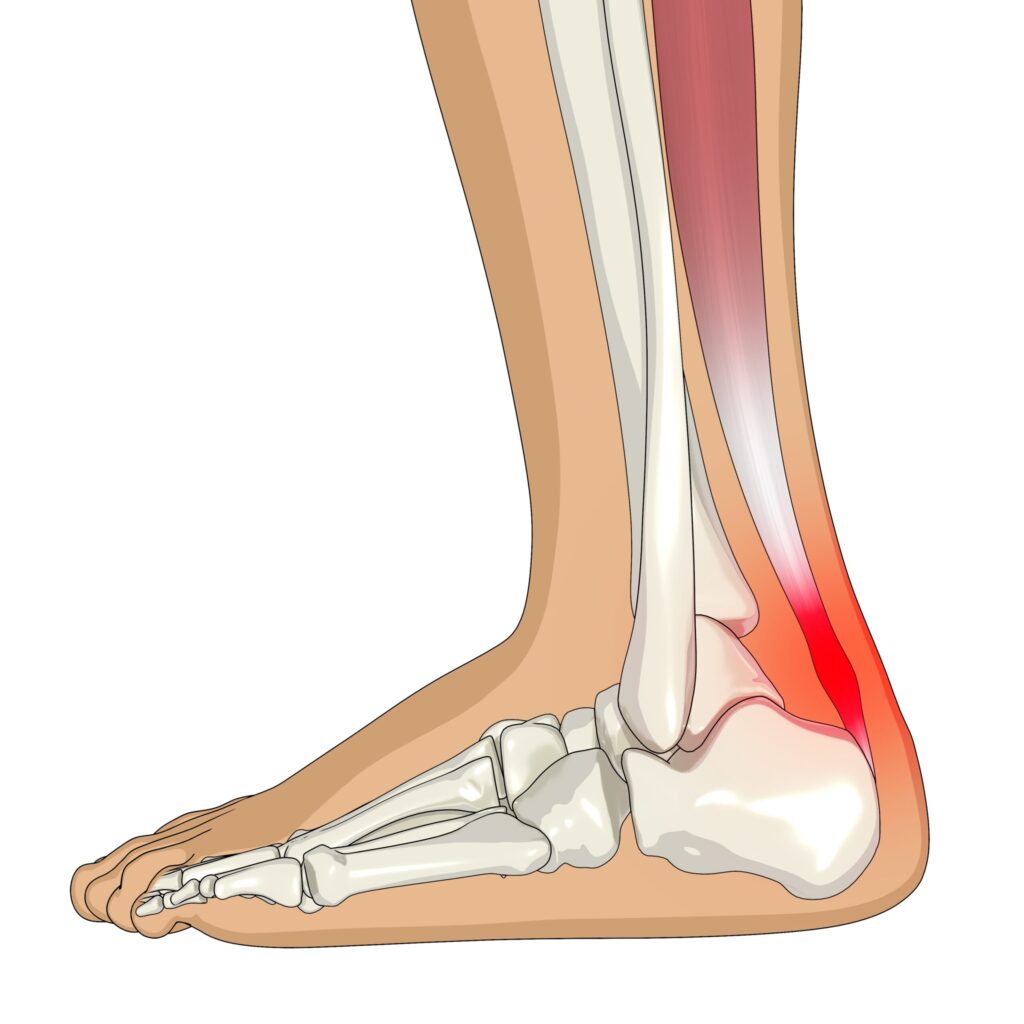Achilles tendinitis is an overuse injury that causes pain and inflammation in the Achilles tendon, which connects the calf muscles to the heel bone. It often occurs in runners and athletes, particularly those who increase their activity levels too quickly or have improper footwear. The main change is a disruption of the ground substance, causing the tendon fibres to separate, which in turn leads to degeneration.
In peritendinitis, the paratendon is inflamed and thickened, and there is edema and crepitus. Kager’s angle (the space between the inner surface of the Achilles tendon, the deep flexors and the calcaneus) is obliterated. Hard, scarred bands appear within the paratenon and adhesions develop between the Achilles tendon and surrounding tissue.
Causes of Achilles Tendinitis
- Overuse: Common in runners, athletes, or those who engage in repetitive activities.
- Sudden Activity Increase: A rapid increase in exercise intensity or duration.
- Improper Footwear: Shoes with poor support can strain the tendon.
- Tight Calf Muscles: Limited flexibility can put extra stress on the tendon.
- Flat Feet or High Arches: Foot structure can influence how the tendon absorbs stress.
- Aging: Tendons lose flexibility and strength over time.
Symptoms
- Pain along the tendon, especially after activity
- Stiffness in the morning or after sitting
- Swelling and tenderness around the tendon
- A crackling or popping sound when moving the ankle
- Pain that worsens with movement or exercise.
- .Limited range of motion in the ankle.
Physiotherapy Treatment
Your foot wear modification and advices the designated footwear that must be look after your qualified Physio doctor.
· Reduce or modify activities that cause pain.
· Apply ice packs to reduce swelling.
· Use a compression bandage to control swelling.
· Keep the foot elevated to help reduce swelling.
· Stretching and strengthening exercises can improve flexibility and support.
· Nonsteroidal anti-inflammatory drugs (NSAIDs) can help with pain and inflammation.
· Proper shoes or orthotics may provide better support.
Prevention
- Gradually increase activity levels.
- Warm up and stretch before exercise.
- Wear supportive footwear.
- Strengthen calf and ankle muscles.
- Avoid repetitive stress by cross-training.
1.What is Achilles tendinitis?
Achilles tendinitis is an overuse injury that causes pain and inflammation in the Achilles tendon, which connects the calf muscles to the heel bone.
2.What are the symptoms of Achilles tendinitis?
Symptoms include pain along the tendon, especially after activity, stiffness in the morning or after sitting, swelling and tenderness around the tendon, and a crackling or popping sound when moving the ankle.
3.What physiotherapy treatments are recommended for Achilles tendinitis?
Treatments include modifying activities that cause pain, applying ice packs, using a compression bandage, elevating the foot, doing stretching and strengthening exercises, ust used for relieving pain and inflammation, and wearing proper footwear for support.

